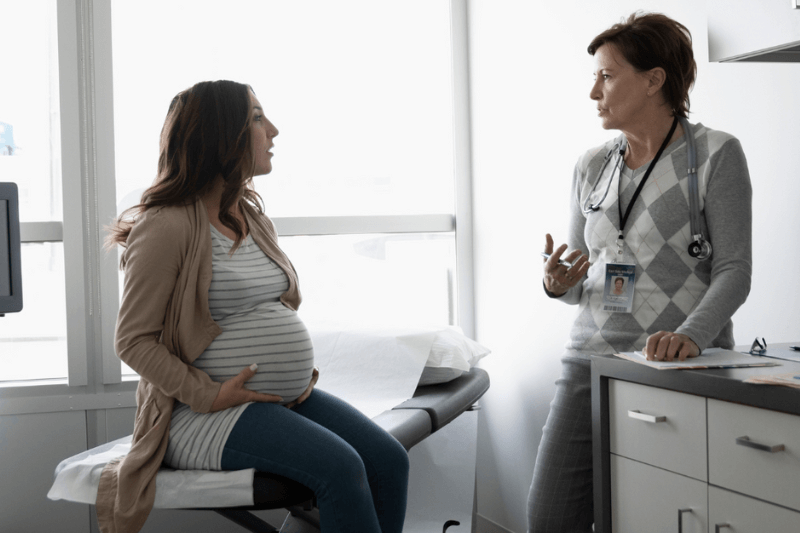It’s natural to assume musculoskeletal (MSK) pain is caused by injuries to your muscles, bones and joints. However, don’t be too quick to judge, as your pain could in fact be triggered by a wider women’s health condition.
So, which women’s health issues mimic MSK pain? Here are some of the most common examples:
1. Endometriosis and adenomyosis
Both are gynaecological conditions that involve endometrial tissue growing in the wrong place, causing pelvic pain, heavy bleeding, and cramping. However, in endometriosis, tissue spreads outside the uterus, such as on the bladder or ovaries. In adenomyosis, it grows in the uterine muscle.
These conditions can cause significant pelvic pain and may be mistaken for MSK problems, particularly in the lower back and hips.
2. Hormonal changes
Conditions involving hormonal fluctuations such as premenstrual syndrome (PMS), PMDD and the menopause can lead to joint and/or muscle pain.
Hormonal imbalance can cause fatigue and muscle weakness, which can also be mistaken for an MSK issue or overuse injury.
Hormonal changes can increase inflammation, which can cause joint swelling and pain that resembles arthritis or other MSK issues. They can also lead to weight gain or loss, affecting posture and increasing the strain on muscles and joints.
Hormonal shifts can also impact pain perception, potentially making MSK pain feel more intense or widespread.
3. Osteoporosis
A condition characterised by weakened bones, osteoporosis can lead to fractures and pain that may be confused with MSK issues.
For example, it can lead to fractures in the vertebrae, causing significant back pain – which could be confused with a herniated disk or muscle strain. Weakened bones can also lead to changes in posture and compensatory movements, causing joint pain that can mimic conditions such as arthritis.
Women are more at risk of osteoporosis than men, especially if their menopause began before the age of 45, or they've had their ovaries removed1.
4. Fibromyalgia
This chronic pain condition affects women more frequently2 and can present with widespread pain, muscle stiffness, fatigue, and other symptoms that may overlap with MSK conditions.
For example, pain throughout the body can be mistaken for generalised MSK pain, or specific conditions such as arthritis or tendonitis. Muscles can also feel tender to touch, similar to what’s seen in MSK injuries or inflammation.
5. Pelvic floor dysfunction
This condition can masquerade as lower back pain or hip issues due to pelvic floor muscles referring pain to surrounding areas when weakened or tense. It’s easy to assume these symptoms are typical muscle aches, which can delay an accurate diagnosis and receiving the right treatment.
6. Pelvic inflammatory disease (PID)
Inflammation and infection in your reproductive organs can cause discomfort that radiates to your lower back or abdomen, which can initially be considered as an MSK issue such as muscle strain or spinal issues. Again, this misattribution can delay proper diagnosis and treatment.
7. Ovarian cysts or tumours
Due to their location and the way they affect nearby structures, ovarian cysts or tumours can lead to abdominal or pelvic pain that might be confused with lower back or hip pain.
Ovarian cysts are fluid-filled sacs that develop on an ovary. They’re very common and don’t usually cause any symptoms. Most occur naturally and go away on their own within a few months without needing any treatment3.
Other types of cysts include:
- endometriomas (which can arise when endometriosis is present)
- and dermoid cysts, which grow from cells and may contain tissue such as skin or hair.
These aren’t associated with the menstrual cycle and don’t always cause pain, which means they can go undetected for a long time until you start experiencing symptoms.
If and when symptoms do occur, they can include:
- pelvic pain, ranging from a dull, heavy sensation to sudden, sharp pain
- pain during sex
- fatigue or feeling run down
- heavy, irregular or lighter periods
- a swollen tummy
- feeling full after only a small amount of food
- needing to urinate more frequently than usual
- urinary infections.
One of the main risks with ovarian cysts is that they might grow very large and eventually rupture or, they may twist and cut off the blood supply to the ovary, this is known as a torsion of the cyst. Symptoms for both can involve heavy bleeding, a sharp severe pain in your abdomen radiating to the groin, fever, vomiting and nausea.
Complications are a rare occurrence, but if it happens you need to attend your nearest A&E to receive immediate medical attention.
Ovarian tumour symptoms can also be confused with an MSK condition, as they can include pelvic or abdominal pain, which is often persistent and may not be alleviated by typical pain relief methods. Back pain is also common, due to pressure from a growing tumour.
Ovarian tumours can be both cancerous and non-cancerous. Early diagnosis can mean it’s more treatable4 so do speak to a healthcare professional as soon as possible should you be concerned about anything.
>Discover more about possible causes of ovarian pain
8. Uterine fibroids
These are common growths made of muscle and tissue that form in or on the wall of the uterus. They can cause pelvic discomfort or pressure that may be perceived as lower back pain due to their effects on surrounding tissues and structures.
Large fibroids can put pressure on nearby organs, nerves or muscles, which can cause pain or discomfort, particularly in the lower back or hips.
If you’re experiencing discomfort from fibroids, you might find yourself altering your posture or how you walk. This can lead to muscle strain or pain in the back or hips.
You can also experience referred pain in other areas of your body, such as your back or legs.
Fibroids are common, with around two in three women developing at least one fibroid at some point in their life. They most often occur in women aged 30-505.
9. Pregnancy-related pain
Pregnancy-related pain is common, and while it may resemble MSK issues, the underlying causes are often specific to the physiological changes during pregnancy.
For example:
- Lower back pain: Your growing uterus shifts your centre of gravity, straining your lower back and often causing pain.
- Pelvic girdle pain (PGP): This specific type of pain refers to discomfort or pain in your joints and ligaments of your pelvic girdle. Pregnancy-related PGP happens for approximately 20% of pregnant women and can happen at any stage of pregnancy6.
- Round ligament pain: This common pregnancy pain occurs in your lower abdomen or groin area and is often sharp, mimicking muscle strain or other abdominal MSK issues.
- Sciatica: The pressure from your growing baby can compress your sciatic nerve, leading to pain that radiates down your leg.
- Joint and muscle pain: Hormonal changes can lead to joint laxity and muscle pain.
- Postural changes: The change in your posture as pregnancy progresses can lead to muscle strain or discomfort in areas such as your neck, shoulders, and upper back.
Always consult with your doctor and midwife as soon as you start experiencing any pain during pregnancy.
10. Thyroid disorders
Thyroid disorders, particularly hypothyroidism (your thyroid gland isn’t producing enough hormones) and hyperthyroidism (produces too many), can present symptoms such as muscle pain and weakness, joint pain and stiffness, fatigue, swelling and inflammation. They can also trigger weight changes, which can impact posture and increase strain on muscles and joints.
Thyroid disorders can also be linked to an increased risk of carpal tunnel syndrome7, resulting in pain, numbness, and tingling in the hands, which are also common MSK symptoms.
>Read more about carpal tunnel syndrome
If you’re experiencing persistent muscle or joint symptoms along with other signs of thyroid dysfunction, such as changes in energy levels, weight, or mood, it may be beneficial to consult a healthcare professional for a thorough evaluation, including thyroid function tests.
11. Autoimmune disorders
Autoimmune disorders occur when your immune system mistakenly attacks your body’s own tissues.
Examples include:
- Lupus8 and rheumatoid arthritis, which are more common in women9, can present with MSK symptoms including joint pain, swelling and stiffness.
- Polymyositis – an inflammatory muscle disease – can lead to muscle pain and weakness.
- Ankylosing spondylitis (AS), is a type of inflammatory arthritis that primarily affects the spine, leading to chronic back pain.
It’s important to note that autoimmune disorders can present with a variety of non-specific symptoms such as fever, skin rashes, or organ involvement, which might complicate the diagnosis if MSK symptoms are predominant.
If you’re experiencing persistent joint or muscle pain along with other symptoms, it may be worth exploring whether an autoimmune disorder is the potential cause. A healthcare professional can provide a diagnosis and appropriate management plan.
It’s understandable to assume your MSK pain is caused by an issue with your muscles, bones and joints. However, as you can see in the examples above, it could be something else causing your pain and discomfort.
If you’re in pain, don’t park it. Speak up. Consult with a healthcare professional for a personalised assessment to ensure you’re receiving the correct diagnosis, treatment and management plan for your specific situation.
References
- Women are at more risk of Osteoporosis – NHS
- Fibromyalgia – NHS
- Ovarian cyst – NHS
- Ovarian cancer – NHS
- Fibroids – NHS
- Pregnancy related pelvic girdle pain and low back pain during pregnancy and after having a baby – Pelvic, Obstetric and Gynaecological Physiotherapy
- Carpal tunnel syndrome in hypothyroidism – National Library of Medicine
- Lupus – NHS
- Rheumatoid arthritis: a female challenge – National Library of Medicine














